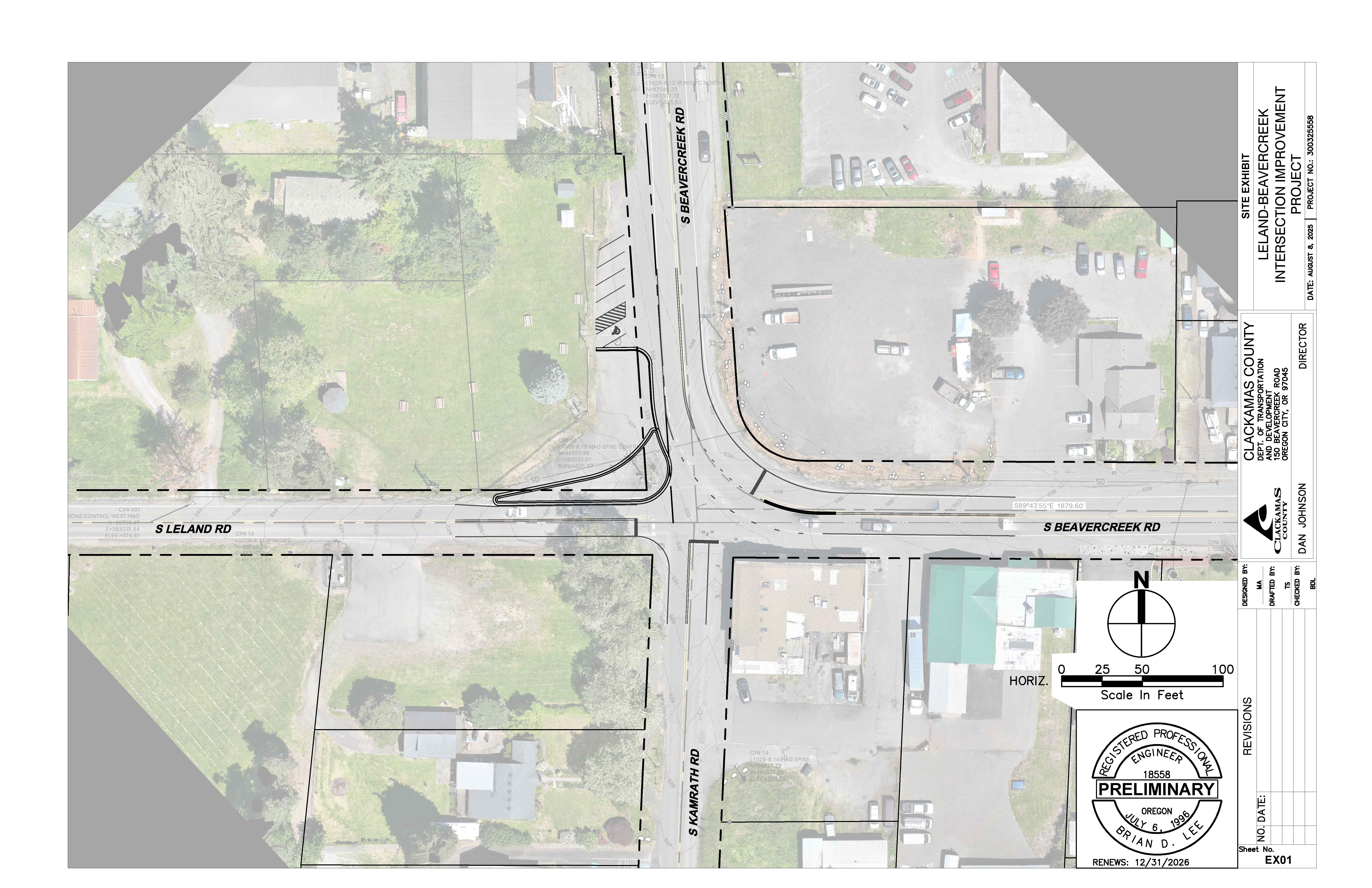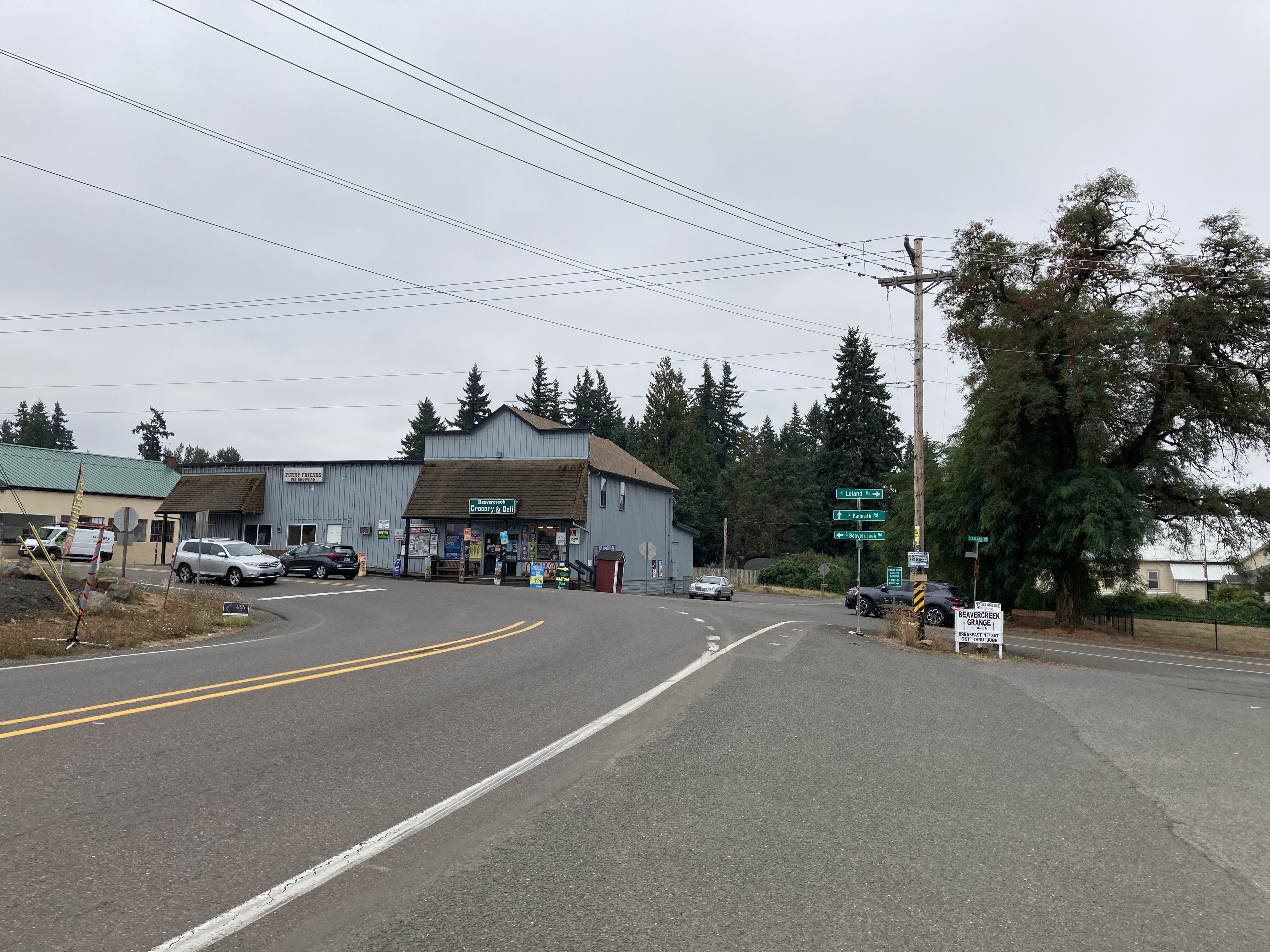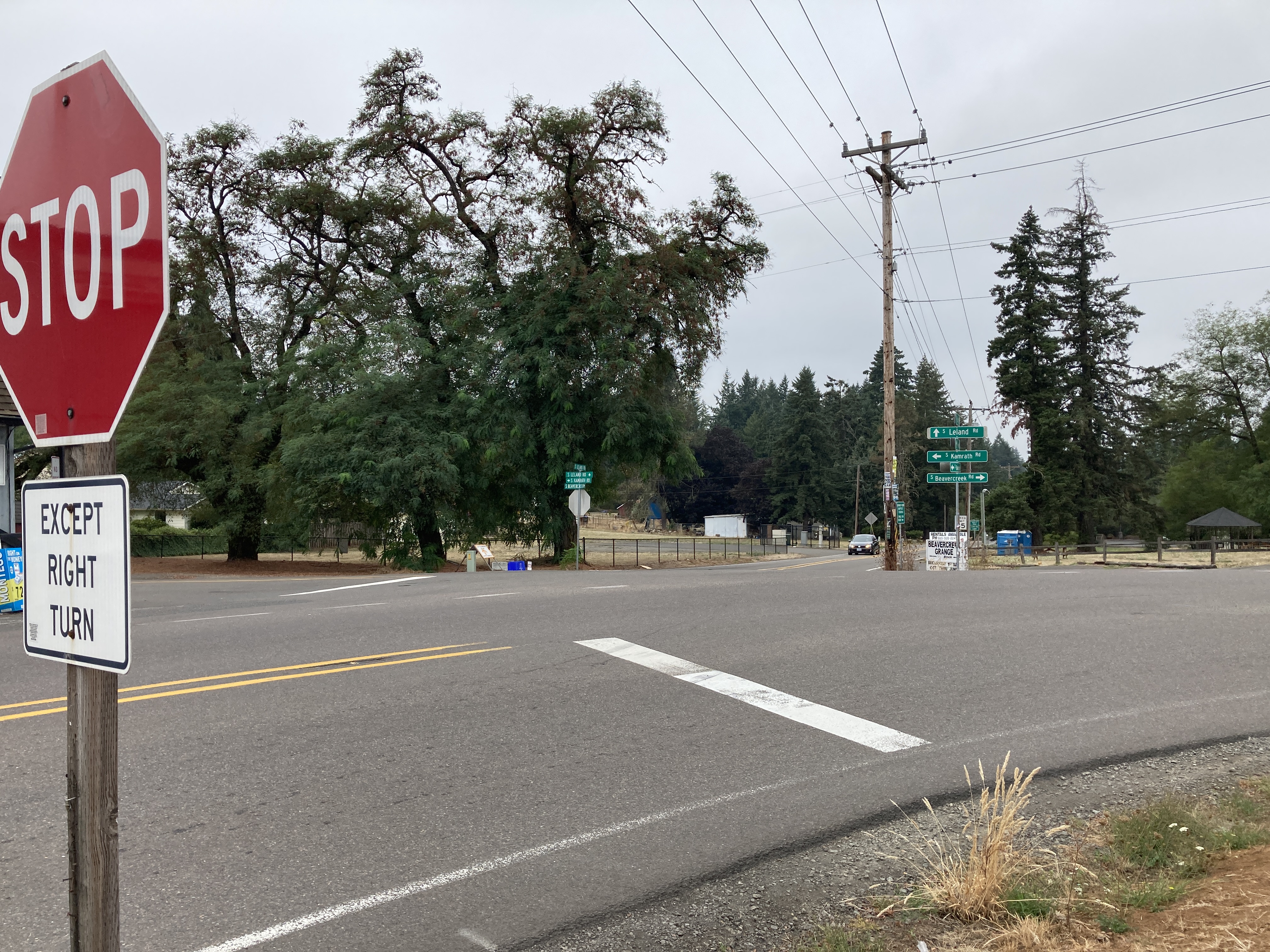Transportation and Development
Transportation System Plan Public Advisory Committee Meeting #4
Transportation System Plan Public Advisory Committee Meeting #3
Transportation System Plan Public Advisory Committee Meeting #2
Meeting materials
Attend the meeting
Bridge Restrictions
List of Clackamas County-owned bridges with restricted load capacity.
See our closure page for closed bridges and roads.
| Bridge location | Crossing | Restriction |
|---|---|---|
| #6560 Bakers Ferry Rd (Barton Bridge) | Clackamas River | 6 Axles: 32T 7 Axles: 33T |
| #6198 Beaver Creek Rd | MilK Creek | 4 Axles: 24T 5-6 Axles: 26T 7 Axles: 29T |
| #6331 S. Bonney Rd #3 East M.P. 1.3 | Mill Creek | 5 Axles: 28T 6 Axles: 30T 7 Axles: 34T |
| #20470 E. Broken Bridge Ln (Broken Bridge) | Hackett Creek | 5 Axles: 29T 6 Axles: 30T 7 Axles: 32T |
| #6571 SE Bull Run Rd (Bull Run Truss) | Sandy River | 12 Tons |
| #6044 S. Central Point Rd | Beaver Creek | 5 Axles: 28T 6 Axles: 29T 7 Axles: 32T |
| #05314 S. Dickey Prairie Rd (Trout Creek Bridge) | Trout Creek | 5 Axles: 28T 6 Axles: 29T 7 Axles: 31T |
| #6454 S. Dryland Rd (Dryland Rd North) | Rock Creek | 4 Axles: 22T 5-6 Axles: 25T 7 Axles: 27T |
| #6143 S. Dryland Rd (Slink- Bridge South- Dryland Rd) | Rock Creek | 4 Axles: 22T 5-6 Axles: 25T 7 Axles: 27T |
| #20466 E. Island Rd (E. Island Rd at Salmon River Rd) | Salmon River | 2-3 Axles: 22T 4 Axles: 21T 5 Axles: 22T 6-7 Axles: 24T Type 3S2: 36T Type 3-3: 38T |
| #05C03 E. Faubion Loop | Bear Creek | 5-6 Axles: 29T 7 Axles: 31T |
| #6264 S. Feyrer Park Rd | Molalla River Overflow | 6 Axles: 31T 7 Axles: 34T |
| #6163 S. Gibson Rd (Gibson Rd Bridge) | Garret Creek | 5 Axles: 29T 6 Axles: 31T 7 Axles: 33T |
| #6217 S. Holly Ln | Abernethy Creek | 2-3 Axles: 18T 4 Axles: 18T 5 Axles: 19T 6-7 Axles: 20T Type 3S2: 26T Type 3-3: 26T |
| #6520 S. Knights Bridge Rd (Knights Bridge) | Molalla River | 2-3 Axles: 20T 4 Axles: 19T 5 Axles: 20T 6-7 Axles: 20T Type 3S2: 24T Type 3-3: 24T |
| #6580 SE Lusted Rd (Dodge Park Bridge) | Sandy River | 2-3 Axles: 19T 4-5 Axles: 18T 6-7 Axles: 19T Type 3S2: 22T Type 3-3: 22T |
| #6591D SE Luther Rd | Johnson Creek | 4 Axles: 23T 5-6 Axles: 25T 7 Axles: 26T |
| #6523 S. Meridian Rd | Rock Creek | 4 Axles: 24T 5-6 Axles: 27T 7 Axles: 28T |
| #6113 S. Miller Rd (Needy Tile Factory) | Rock Creek | 5 Axles: 28T 6 Axles: 29T 7 Axles: 32T |
| #6168 S. Monte Cristo Rd East | Garret Creek | 2-3 Axles: 25T 4 Axles: 22T 5 Axles: 24T 6-7 Axles: 25T Type 3S2: 37T Type 3-3: 40T |
| #6167 S. Monte Cristo Rd West | Marquam Creek | 2-3 Axles: 25T 4 Axles: 22T 5 Axles: 24T 6-7 Axles: 25T Type 3S2: 37T Type 3-3: 40T |
| #6115 S. Sconce Rd (Political Bridge) | Rock Creek | 4 Axles: 22T 5 Axles: 24T 6-7 Axles: 26T |
| #6512 S. Springwater Rd | Clear Creek | 5 Axles: 28T 6 Axles: 29T 7 Axles: 31T |
| #6455 SE Stanley Ave (Stanley Ave Bridge) | Johnson Creek | 2-3 Axles: 19T 4 Axles: 20T 5-6 Axles: 21T 7 Axles: 24T Type 3S2: 32T Type 3-3: 34T |
| #05C04 E. Road 10 (Still Creek Bridge) | Still Creek | 2-3 Axles: 24T 4 Axles: 22T 5-6 Axles: 23T 7 Axles: 24T Type 3S2: 38T Type 3-3: 40T |
| #6575 Summit Drive (Iron Mountain Overpass) | Railroad | 4 Axles: 25T 5-6 Axles: 26T 7 Axles: 30T |
| #20462 SE Suter Ave | Goose Creek | 6 Axles: 32T 7 Axles: 34T |
| #6568 SE Tickle Creek Rd | Tickle Creek | 11 Tons |
| #6175 S. Wildcat Rd (Marquam Bridge) | Marquam Creek | 5 Axles: 30T 6 Axles: 31T 7 Axles: 35T |
| #6254 Windy City Rd - South | MilK Creek | 5 Axles: 29T 6 Axles: 29T 7 Axles: 31T |
| #6609 S. Winslow Rd (Klangs Mill Bridge) | MilK Creek | 16 Tons |
| #05C02 S. Wyland Rd | Rock Creek | 10 Tons |
A Community Celebration: Shaping the Future of the Sunrise Corridor
On a fall evening in October at the Sunrise Water Authority, community members, volunteers, and local leaders came together to celebrate something special — a shared vision for the future of the Sunrise Corridor.
Leland-Beavercreek-Kamrath Intersection Improvements
Status
Engineering design
Updated: Oct 16, 2025
Beavercreek, Leland, and Kamrath roads are two-lane roads with a travel lane in each direction. The intersection is located on a sharp curve resulting in poor visibility. In addition, a portion of the intersection provides extra space for drivers to cut through from Beavercreek Road onto Leland Road at high speeds.
Clackamas County completed a safety analysis and design study in 2024 for the Beavercreek Road/Leland Road/Kamrath Road intersection. The purpose of the study was to develop short- and long-term improvement concepts and recommend safety enhancements. While traffic analysis data shows expected crash rates at this intersection, there have been many complaints received over the years including concerns about serious accidents and near misses.
Short-term solution
- Reduce pavement width from the northwest corner to slow traffic down and improve visibility
- NW section of intersection - Install drivable concrete curbs with a hard surface behind the curbs to help redirect vehicles and to accommodate turning trucks and trailers while promoting slower speeds and greater safety
- Along WB Beavercreek – Considering options for possible improvements made along Beavercreek Road east of the intersection that may better guide westbound travelers taking left-turns onto Leland or Kamrath roads
- Relocate utility pole(s) to improve visibility and safety
- Add and improve signs and pavement markings to guide travelers
Long-term solution
- Design a roundabout to prevent serious crashes
Why
To reduce crashes and improve safety for all roadway users.
Schedule
- Project planning and design: June 2025 - March 2026
- Construction: June 2026 - December 2026
Traffic impacts
A full road closure is not anticipated for this project. Expect rolling single lane closures during construction between 7 a.m. and 6 p.m., Monday through Friday. While we do not expect the need to work on Saturdays, it may be necessary due to weather or other factors.
Current activities
- Engineering design by PACE Engineering, Inc.
- Expect to see staff or consultants occasionally visiting the intersection.
Funding
- Project estimate $300,000
- Funding is provided from County Road Funds
Existing conditions
Examples of the project intersection are shown below.
What to expect during construction
- Construction creates noise, vibration and dust, and can disrupt normal neighborhood activity.
- Local access to all properties will be maintained, but construction may delay access.
- Expect traffic delays in and near the work area. Please observe traffic control signs and follow the directions of flaggers.
- On‐street parking will be restricted in and near the work area to create a safe work environment and to stage equipment and materials.
- Some equipment and materials may be stored on area streets overnight.
- There may be periods of inactivity between construction phases due to a variety of factors including weather, subcontractor schedules, cure time for materials and the availability of materials.
- A county inspector will be on-site during work hours and may be able to assist you with an immediate need during construction.
- Sewer, water and other utilities will remain in service during construction.
Staff contact
Bob Knorr, project manager
503-742-4680
rknorr@clackamas.us
 Translate
Translate








